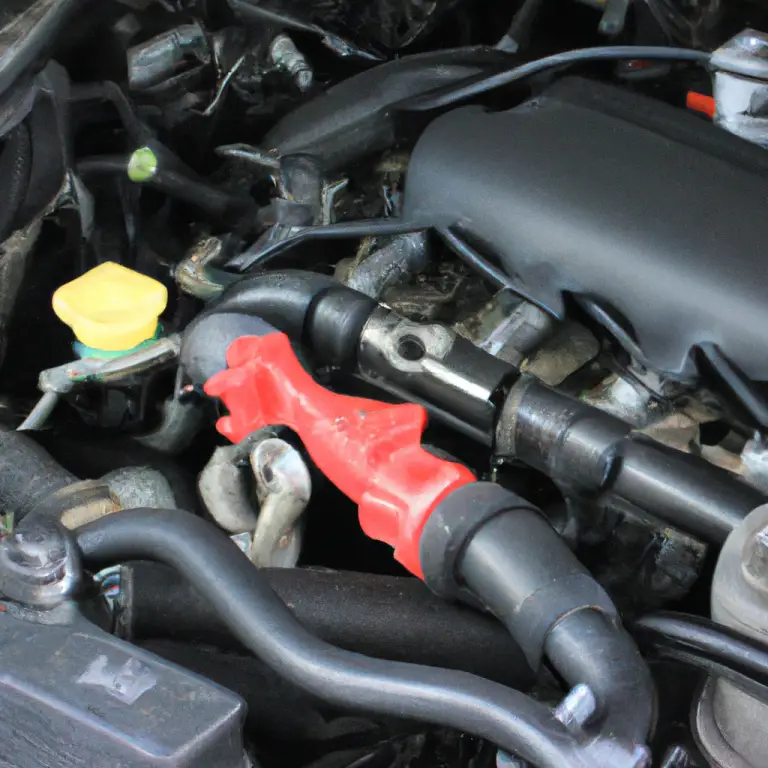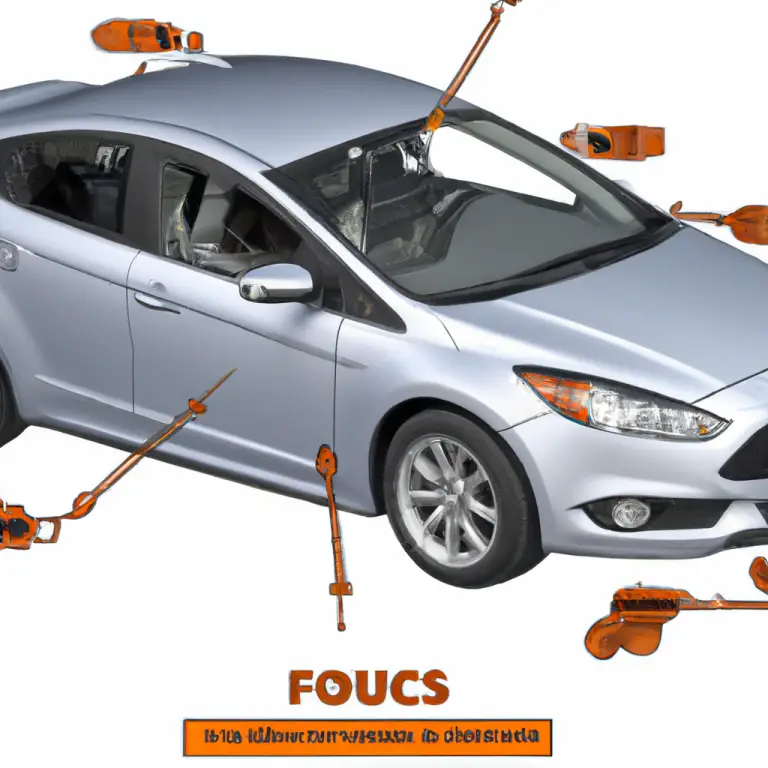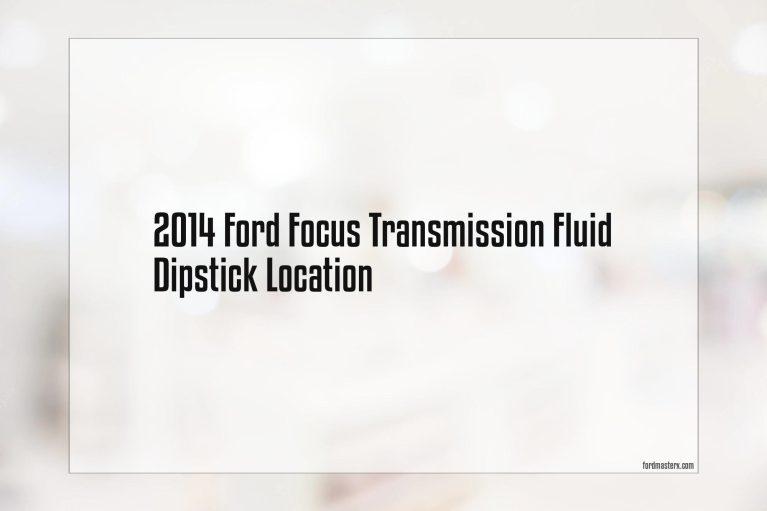2014 Ford Focus Purge Valve Recall
Last Updated on by David Jon
In response to widespread concerns, Ford issued a recall of the purge valve in its 2014 Focus model, a necessary measure given the risks associated with malfunctioning automotive equipment. This article outlines the key information about this recall, examining the causes, implications, and required steps for owners of these vehicles. As a trusted source of automotive knowledge, we believe in equipping you with detailed, actionable insights that optimise not just the performance of your vehicle, but also its longevity and safety. This valuable comprehension of the 2014 Ford Focus purge valve recall marks a critical juncture in vehicle maintenance and awareness-raising, forming a go-to guide for all Ford Focus owners affected by this recall.
Overview of 2014 Ford Focus Purge Valve Recall
Recalls for motor vehicles are never a light matter, particularly for the owners of the vehicle. Being aware of these recalls is vital as they are issued to address safety concerns that could potentially lead to accidents or damage to the vehicle if not properly addressed. Let’s dive deep into the details of one such recall.
Recall announcement date
The recall for the 2014 Ford Focus purge valve was announced in late 2018. Ford Motor Company initiated the recall after identifying a fault in the purge valve which could potentially cause harm to both vehicle and driver.
Reason for the recall
The rationale behind the recall stemmed from a defect in the purge valve of the vehicle. A malfunction in the 2014 Ford Focus’ purge valve could potentially result in excessive vacuum in the fuel tank. This excessive vacuum could then cause the fuel tank to deform, leading to cracks and potential fuel leaks.
Safety risk posed by the defect
The detriments of this defect are far from insignificant. Potential fuel leaks from the deformed fuel tank present an immediate fire hazard. On top of that, an overly deformed tank could lead to engine stalling while the vehicle is in operation, increasing the risk of collisions.
Description of Purge Valve Defect
Understanding the intricacies of this defect entails a comprehension of what the purge valve’s function is and how its malfunction affects the vehicle’s operations.
Function of the purge valve
The purge valve serves as a part of the vehicle’s evaporative emission control (EVAP) system, which is responsible for managing the release of fuel vapors. The purge valve controls the timing and amount of fuel vapor that is purged from the charcoal canister.
Symptoms of a faulty purge valve
Observing for signs that may indicate a faulty purge valve include poor fuel economy, difficulty starting your vehicle, and an illuminated check engine light.
Potential damage caused by a faulty purge valve
Should the purge valve in your vehicle develop a defect, you may notice increased fuel consumption due to the valve being stuck open. Should it be stuck closed, pressure could build up, potentially damaging the fuel tank and charcoal canister.
Ford’s Response to the Recall
Taking responsibility for the potential threat to safety, Ford took decisive and immediate measures to address the issue.
Official statement from Ford
In their official statement, Ford acknowledged the purge valve defect and expressed commitment to rectifying the problem to maintain the general safety of their customers.
Steps taken by Ford to address the defect
Ford initiated a recall for the affected vehicles, amounting to approximately 1.5 million Ford Focus cars from the manufacturing years 2012-2018 equipped with 2.0L GDI and GTDI engines.
Recall notice sent to owners
Upon identification of the affected vehicles, Ford dispatched recall notices to the owners, thus alerting them to the potential danger and instructing them on how to initiate the remediation process.
Free Repair Service for Recalled Vehicles
In an effort to resolve this error efficiently, Ford provided free repair services for the recalled vehicles.
Details of the free repair service
The repair involves the reprogramming of the powertrain control module with appropriate software that can regulate fuel pressure in the diaphragm.
Process to avail the free repair
Owners of those vehicles impacted by the recall were instructed to contact an authorized Ford dealer to schedule their repair.
Estimated time required for the repair
The estimated time for the repair varies but is typically a few hours. Owners have the option to drop their vehicle off and return when the repair is completed.
Price and Availability of Replacement Components
Should alternative fixes or replacements be required, the most adequate options are readily available, courtesy of Ford.
Cost of the purge valve component
The cost of the purge valve component varies but typically ranges within a manageable amount for most consumers.
Availability of replacement parts
Replacement parts associated with this recall are fully stocked at authorized Ford dealerships and repair centers.
Warranty provided on replacement parts
All replacement components for this particular recall are warranted by Ford, assuring the vehicle owners of their product’s reliability and safety.
Ford Dealerships and Repair Centers
To facilitate the necessary repairs and modifications, a detailed list of locations to access this service is made readily available to vehicle owners.
List of authorized Ford dealerships
Authorized Ford dealerships can be found all over the nation, ensuring accessibility of the needed repair. Contact your local dealership for more information.
How to schedule a repair
To receive the repair, owners can ring their local authorized Ford dealership and schedule an appointment at their convenience.
What to expect when visiting a Ford repair center
Owners can expect professional service and expert handling of their vehicle to rectify the defect when visiting a Ford repair center.
Precautions for Vehicle Owners
Upon receiving the recall notice, vehicle owners should be aware of possible precautions until the necessary repairs are completed.
What to do upon receiving a recall notice
Upon receiving the recall notice, it is recommended to contact your local Ford dealership as soon as possible to schedule your free repair.
Driving precautions until the repair is done
While waiting for the repair, owners should keep an eye out for symptoms of a defective purge valve and limit drives to necessary travel only.
Signs indicating immediate attention required
Signs that indicate immediate attention includes fuel smell, presence of a check engine light, difficulty starting, or abnormal fuel consumption.
Potential Legal Recourse for Owners
Given the potential risks and inconvenience caused by this malfunction, owners may seek to explore potential legal courses of action.
Case scenarios for legal recourse
Legal recourse may be explored in instances where accidents or damage occurred due to the defect before the recall notice was issued. Claims may cover personal injury, damage to the vehicle, and consequential damage.
Previous lawsuits related to recall
While the specifics of past lawsuits related to this recall are confidential, owners taking legal action against manufacturing defects is not uncommon.
How to file a claim against Ford
Should you need to file a claim against Ford, it is advisable to contact a lawyer familiar with automotive recalls or consumer protection laws for guidance.
Impact of Recall on 2014 Ford Focus Resale Value
A recall, albeit a common occurrence in the industry, could potentially influence a vehicle’s resale value.
Assessment of the impact on vehicle value
The impact of the recall on the 2014 Ford Focus remains to be fully established; however, a fully addressed recall doesn’t necessarily decrease the vehicle’s resale value.
Tips for selling a recalled vehicle
When selling a recalled vehicle, it is advisable to complete all repairs related to the recall and provide documentation of the completed repair to potential buyers.
Options for trade-ins with Ford
Ford accepts trade-ins regardless of recalls. Following the completion of the necessary recall repair, owners may opt to trade-in their vehicle at any authorized Ford dealership.
Lessons Learned from the Recall
As with any hurdle, there are lessons to be learned in an attempt to avoid a recurrence in the future.
Implications for Ford’s manufacturing process
The recall potentially indicates a need for more rigorous quality control processes within Ford’s manufacturing plants.
Impact on overall brand reputation
While recalls are never good for a brand’s reputation, Ford has handled the recall professionally and responsibly which helps to mitigate some of the negative impacts.
Preventive measures by Ford to avoid future recalls
To prevent future recalls, Ford may consider additional quality checks during manufacturing, frequent monitoring of in-use vehicles, and continual training for quality control personnel.
Maintaining a vehicle can be a daunting task, especially when you encounter recall notices and potential legal complications. Armed with an understanding of this recall, you can ensure your vehicle’s safety is maintained, guard against future recalls, and protect your legality in all aspects. Keep a keen eye for warning signs and ensure your vehicle gets the necessary attention it deserves.







